I’ve been on a honey kick this year. Not the kind of kick that causes me to eat honey all of the time (I don’t and can’t without heart palpitations and a serious sugar high), but the kind of kick that gets me thinking about honey, seeking out different varieties, and doing a little research.
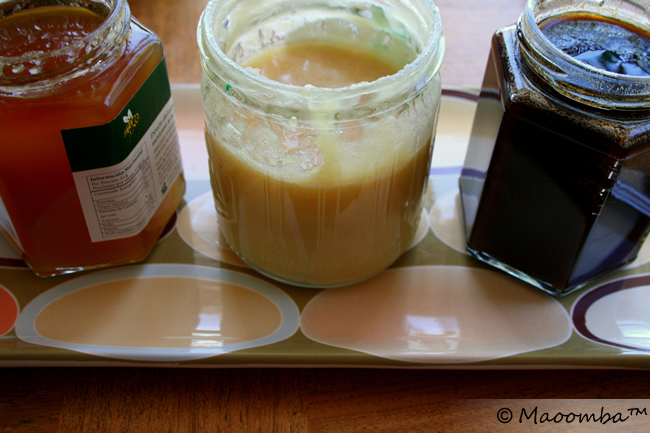
It started with a sample last fall of some thick and dark honey from the wild bees of Ghana’s Mole forest. Just two weeks later, my brother sent me jars of honey (not all of them survived the journey) from the cultivated sunflower fields of Germany – it was the creamiest, lightest honey I’d ever eaten. Both types of honey were rich, unfiltered goodness. And, yet, they couldn’t “bee” more different.
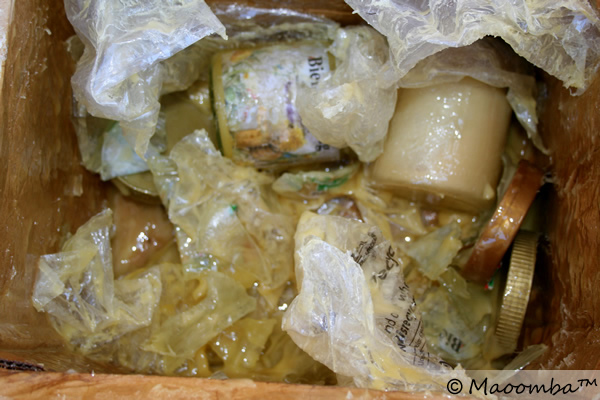
Since those samples, I’ve begun collecting other examples of this delicious, natural sweetener locally and when I travel – from organic honey from Mexico’s Yucatan peninsula to lavender flower honey grown in central Utah. This is no grocery store bear-bottle honey; it is delicious liquid gold.
To learn more about honey, I also picked up a couple of books: Robbing the Bees: A Biography of Honey and The Beekeeper’s Lament. Both are great resources on the long history, lives, and keeping of bees, as well as the modern-day honey trade.
One thing I have not done, is actually eat the honey. I’ve been waiting for a special occasion with a special person: my brother.
Honey Tasting Notes
Ever since I received the box full of honey from him, my brother – a honey connoisseur since childhood who never has less than 4 kinds of honey in his kitchen – and I have talked about the varieties he has seen in his time living in Germany. When I told him about the kinds I had run across, we decided we needed to try them out together.
So, when he came to town this week, we did! First, we talked about flavor, color, texture, process (raw vs. pasteurized, filtered or not, organic or not), and origin (the flowers, bees, and lands). Honey, like wine, can vary when it’s grown in different places, comes from different flowers, and is processed (or not) and can age differently – crystallizing, for example – depending on the variety and process.
Then we cracked open the jars I’d been waiting to taste with him. With 6 spoons, 3 open bottles, and 2 glasses of water, we were set.
We started with the most liquid – dzidzilche – and worked our way to the darkest and most solid of the three.
Here are our notes:
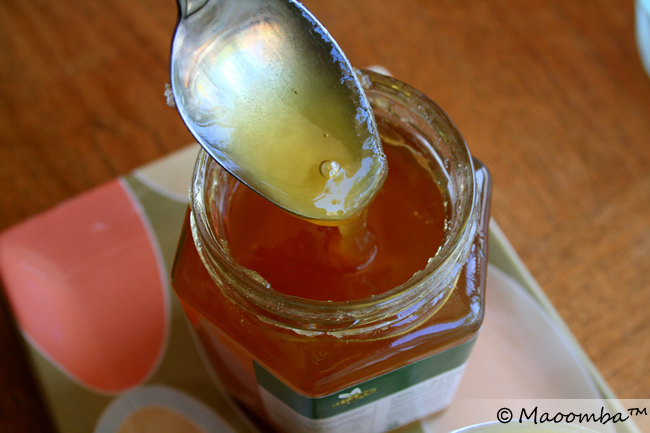 Dzidzilche Honey (Organic; process unspecified)
Dzidzilche Honey (Organic; process unspecified)
Origin: Yucatán Peninsula, Mexico
Primary flower: Dzidzilche, a delicate, white flower unique to the Yucatán
Color: Clear amber
Consistency: Runny; drizzles easily
Nose: Very flowery, heady perfume
Taste: Not overly sweet; hints of tropical fruit
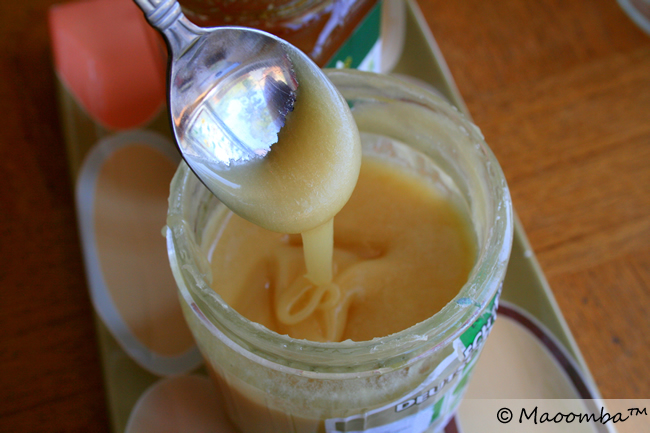
Sunflower Honey (raw, unfiltered)
Origin: South-Western Germany
Primary flower: Cultivated sunflowers
Color: Light, golden; opaque
Consistency: Creamy and thick; runs slowly; reminiscent of pulled taffy
Nose: Very, very light and sweet smelling
Taste: Very sweet – like a jolt to the system; almost candy-like
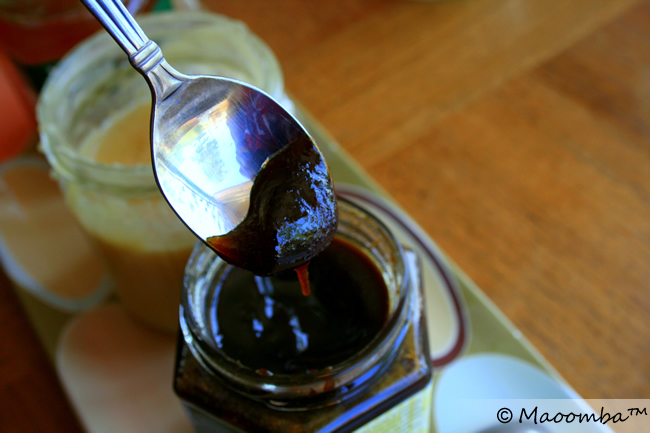 Wild Molé Honey (Aseda’s honey is raw, unfiltered, wild flowers)
Wild Molé Honey (Aseda’s honey is raw, unfiltered, wild flowers)
Origin: Ghana, Africa
Primary flower: Wildflowers from Mole forest
Color: Dark brown, almost black
Consistency: Thick like a paste; clings to spoon and holds shape
Nose: Rich, leathery
Taste: Not very sweet; heavy, rich, earthy flavor, unlike any other honey we’ve tried
Want to Set up Your Own Tasting?
Last week, I talked about setting up kitchen experiments as a way to refine your palate and get a sense of the variety of flavors that a single food can assume. Honey is definitely one of those foods.
- Find several varieties – they could be from different places or are different colors. Maybe you compare local honey from a nearby farm to honey from another country you find at the grocery store. Or, test out that honey bear bottle against the most high quality raw, unfiltered, organic honey you can find and see if it measures up.
- Take notes on the honey – what is it, where is it from, what color and clarity does it have, what does it smell like, how does it taste, what kind of texture does it have (smooth, crystallized, creamy, etc.), what is the consistency (drizzly, thick, etc.), what do you like about it or not like…?
- If you want, sample the honey with other foods: pears, figs, cheeses, nuts, or your morning tea. Do certain pairs taste better to you than others?
- Sip water and snack on something neutral in between tastes to cut the sweetness and prepare your taste buds for the next sample.
- Compare with others’ observations.
- Would you buy the honey again?
***
Be sure to check out this honey-inspired recipe for snacks jam-packed with seeds, nuts, and other goodies.